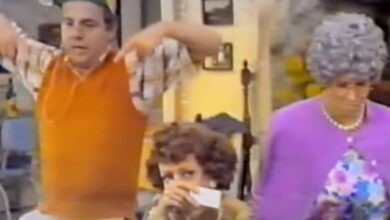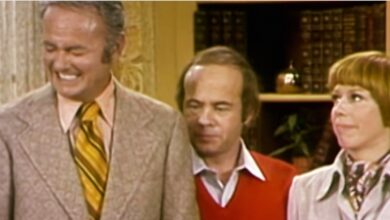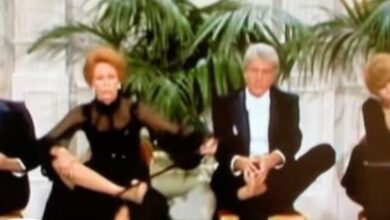Patsy Cline’s ‘I Fall to Pieces’ Redefines Heartbreak and Brings Country Music to the Mainstream in 1961
Released in January 1961, I Fall to Pieces quickly became one of the most defining and influential country-pop crossover hits in American music history. With its aching lyrics, lush production, and emotionally rich delivery, the song not only topped the country charts but also made a notable impact on the Billboard Hot 100. It was Patsy Cline’s first number-one country hit and a turning point—not just in her career, but in the broader story of how country music found a permanent home in the mainstream.
Patsy Cline, born Virginia Patterson Hensley in Winchester, Virginia, had been performing since her teens. She stood out in the Nashville scene of the 1950s thanks to her powerful, expressive contralto voice and her fearless approach to material that blended traditional country with pop sophistication. Unlike many of her contemporaries, she had a style that resonated beyond regional boundaries. Her earlier hit “Walkin’ After Midnight” hinted at crossover success, but it was I Fall to Pieces that truly launched her into the national spotlight.
The song was written by Hank Cochran and Harlan Howard, two prolific songwriters in the Nashville circuit. Interestingly, Cline initially resisted recording the song, believing it leaned too far into pop. But producer Owen Bradley persuaded her to give it a chance, recognizing the emotional potential of the song when paired with her voice. The lyrics told a story of heartbreak and longing—of someone still emotionally unraveling every time they see their former lover—and it struck a universal chord. Its simplicity was its power.
The recording took place in the legendary Bradley Studios in Nashville. Owen Bradley brought together a polished, sophisticated arrangement that included piano, steel guitar, and background vocals from the Jordanaires, who were also backing Elvis Presley at the time. Cline’s performance was recorded after she had been in a serious car accident just weeks earlier, and her delivery—restrained yet vulnerable—reflected both physical pain and emotional depth. Her voice floated between strength and fragility, and the result was hauntingly beautiful.
When released, I Fall to Pieces took time to catch on, but once it did, there was no stopping its momentum. It climbed to number one on the Billboard Hot Country & Western Sides chart and reached number 12 on the Billboard Hot 100—a rare feat for a female country artist at the time. The song spent 39 weeks on the charts and helped pave the way for future country-pop fusion efforts. The success was amplified by Cline’s television appearances and radio tours, which brought her voice into homes across the nation.
Culturally, the song arrived at a time when gender norms in music were starting to shift, but very slowly. Cline’s emotionally candid yet dignified performance allowed women to see themselves in mainstream narratives of heartbreak without needing to scream or sensationalize. She delivered sadness with class and power, making the listener feel the weight of every word. In many ways, she gave heartbreak a new musical vocabulary, one that was elegant, restrained, and profoundly moving.
The impact of I Fall to Pieces on Patsy Cline’s career was immediate and transformative. It made her a star not just in Nashville, but across the United States. She was suddenly in demand at the Grand Ole Opry and on national TV shows. Her subsequent singles, including “Crazy” and “She’s Got You,” would continue her ascent, but it was I Fall to Pieces that opened every door. The song’s success also encouraged record labels to take female vocalists more seriously as commercial and artistic forces.
In terms of genre influence, the track was pivotal in solidifying the Nashville Sound—a smoother, more pop-oriented approach to country music that used orchestration and background vocals. This style would dominate country radio through the 1960s and early 1970s, with artists like Jim Reeves and Tammy Wynette building on the path that Cline helped clear. Her success showed that emotional nuance could thrive commercially, challenging the idea that country had to be rough-edged or limited to a regional audience.
I Fall to Pieces has since been covered by numerous artists across a range of genres. Linda Ronstadt, Trisha Yearwood, and LeAnn Rimes have all recorded versions, but none have matched the aching subtlety of Cline’s original. Each new interpretation pays homage to the emotional terrain she mapped first—a landscape of heartbreak where elegance met authenticity.
Around the time of the song’s success, Cline was still recovering from her car crash, and many noted that her performances during this period carried an added emotional resonance. She sang with a kind of wounded strength that couldn’t be faked. That brush with mortality seemed to seep into her voice, enhancing her already remarkable interpretive skill. It was as if she knew each song could be her last—and she made every note count.
The long-term legacy of I Fall to Pieces is impossible to overstate. It is regularly cited among the greatest country songs ever recorded and continues to appear on “best of” lists in both country and pop circles. Radio stations still play it, and new generations continue to discover it through films, series, and curated playlists. Its enduring appeal lies in the universal experience it portrays—how love lost never quite lets go.
The song also helped shift production techniques in country music. Its polished arrangement set a new standard for what Nashville could produce. It became a touchstone for the kind of crossover success that record executives would chase for decades to come. For artists aiming to bridge traditional country with modern sounds, I Fall to Pieces became the gold standard.
After Cline’s tragic death in a 1963 plane crash at just 30 years old, the song took on a deeper resonance. It became part of her legacy—a sonic reminder of what was lost and what she left behind. Posthumously, the song became even more beloved, and Cline was later inducted into the Country Music Hall of Fame in 1973.
Ultimately, I Fall to Pieces is more than a song—it’s a testament. A testament to the emotional depth that country music can offer. A testament to a woman who helped shift the boundaries of genre and gender in the music industry. And a testament to how a voice, when matched with the right words and melody, can leave a mark that no passage of time can erase.





